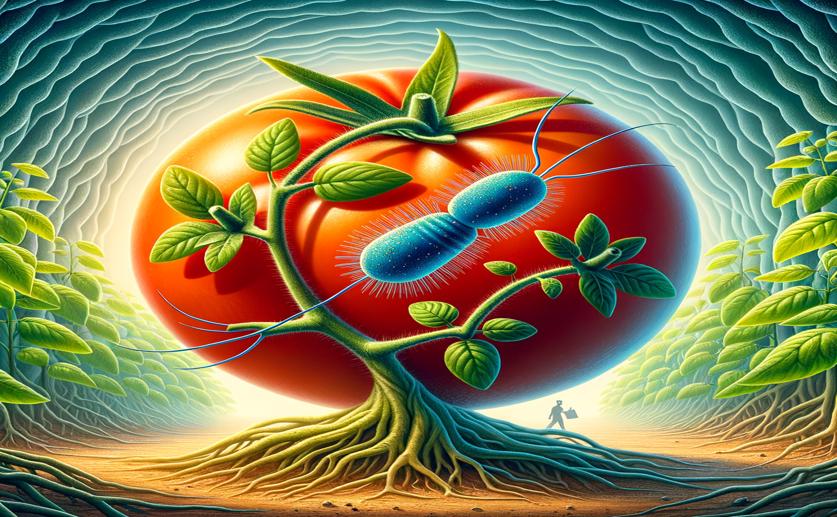
Exploring a New Tomato Plant Bacteriophage Discovered in a Cave
Jenn Hoskins
10th April, 2024

Image Source: Natural Science News, 2024
Key Findings
- In Guizhou, scientists discovered a new virus, phage D6, that targets the tomato plant pathogen Pseudomonas syringae
- Phage D6 can rapidly multiply and is stable across typical tomato-growing conditions, suggesting its use as a biocontrol agent
- When applied to tomato plants, phage D6 reduced disease severity and bacterial count, showing promise as an eco-friendly plant protector
References
Main Study
1) Characteristics and whole-genome analysis of a novel Pseudomonas syringae pv. tomato bacteriophage D6 isolated from a karst cave.
Published 9th April, 2024
https://doi.org/10.1007/s11262-024-02064-9
Related Studies
2) Pseudomonas syringae: what it takes to be a pathogen.
3) Identification of stably expressed reference genes for expression studies in Arabidopsis thaliana using mass spectrometry-based label-free quantification.
4) Characterization of copper-resistant bacteria and bacterial communities from copper-polluted agricultural soils of central Chile.



 2nd April, 2024 | Jenn Hoskins
2nd April, 2024 | Jenn Hoskins